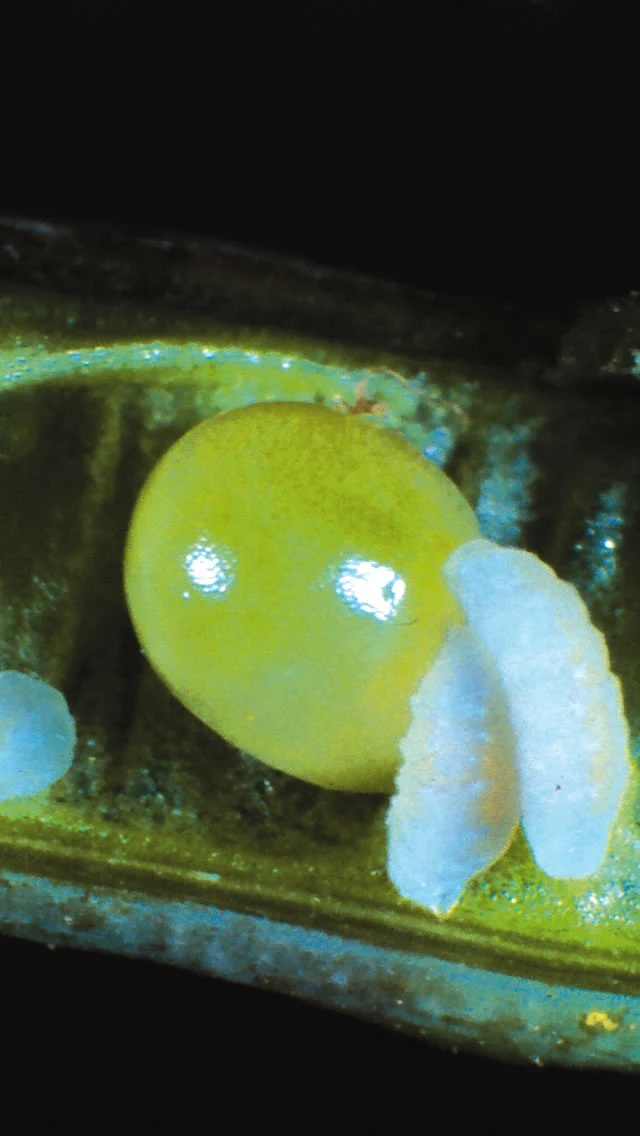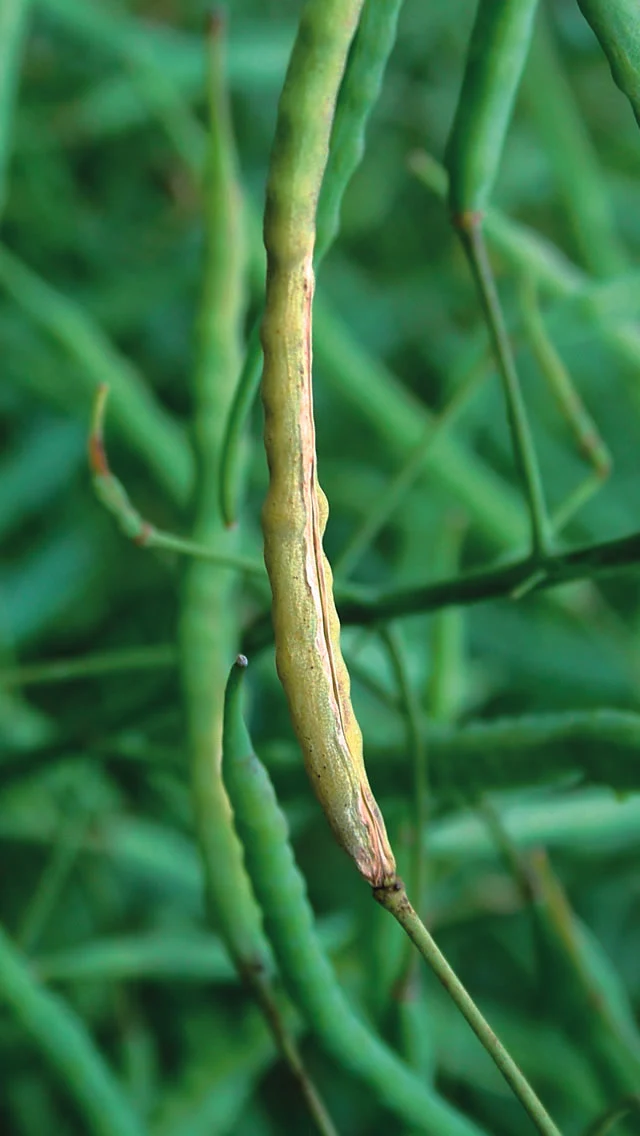
Brassica Pod Midge
Dasineura brassicae
Identification
The brassica pod midge is a small fly, up to 2 mm long. The larvae are also about 2 mm long, white/pale yellow and do not have legs or a defined head.
Symptoms
Brassica pod midge lay their eggs within developing oilseed rape pods. They utilise holes in developing oilseed rape pods for egg-laying, and these holes may be due to feeding or oviposition punctures by cabbage seed weevil, feeding punctures by other insects such as capsids, or by physical/mechanical damage.
On hatching, the small larvae feed on the inside of the pod wall, leading to distorted pods which eventually lead to pod-shatter and loss of seed.
Life-cycle
The adults emerge from cocoons in the soil in late spring. After mating the short lived females lay up to 60 eggs per pod. After feeding the larvae leave the distorted and twisted pods to pupate in cocoons in the soil. Two generations can be produced each summer and the second generation can move onto later flowering brassicas as well as overwintering in sheltered locations.
Importance
Pod midges are found throughout the UK and the affect on yield is linked to the activity and presence of the cabbage seed weevil. Damage often appears most severe on the crop headlands where the presence of easily found translucent pods can give cause for concern.
Threshold
A decision to protect crops from damage from the brassica pod midge will depend on the activity and presence of the cabbage seed weevil.

Brassica pod midge damage

Brassica pod midge larvae

Numerous larvae can be found in a single pod


